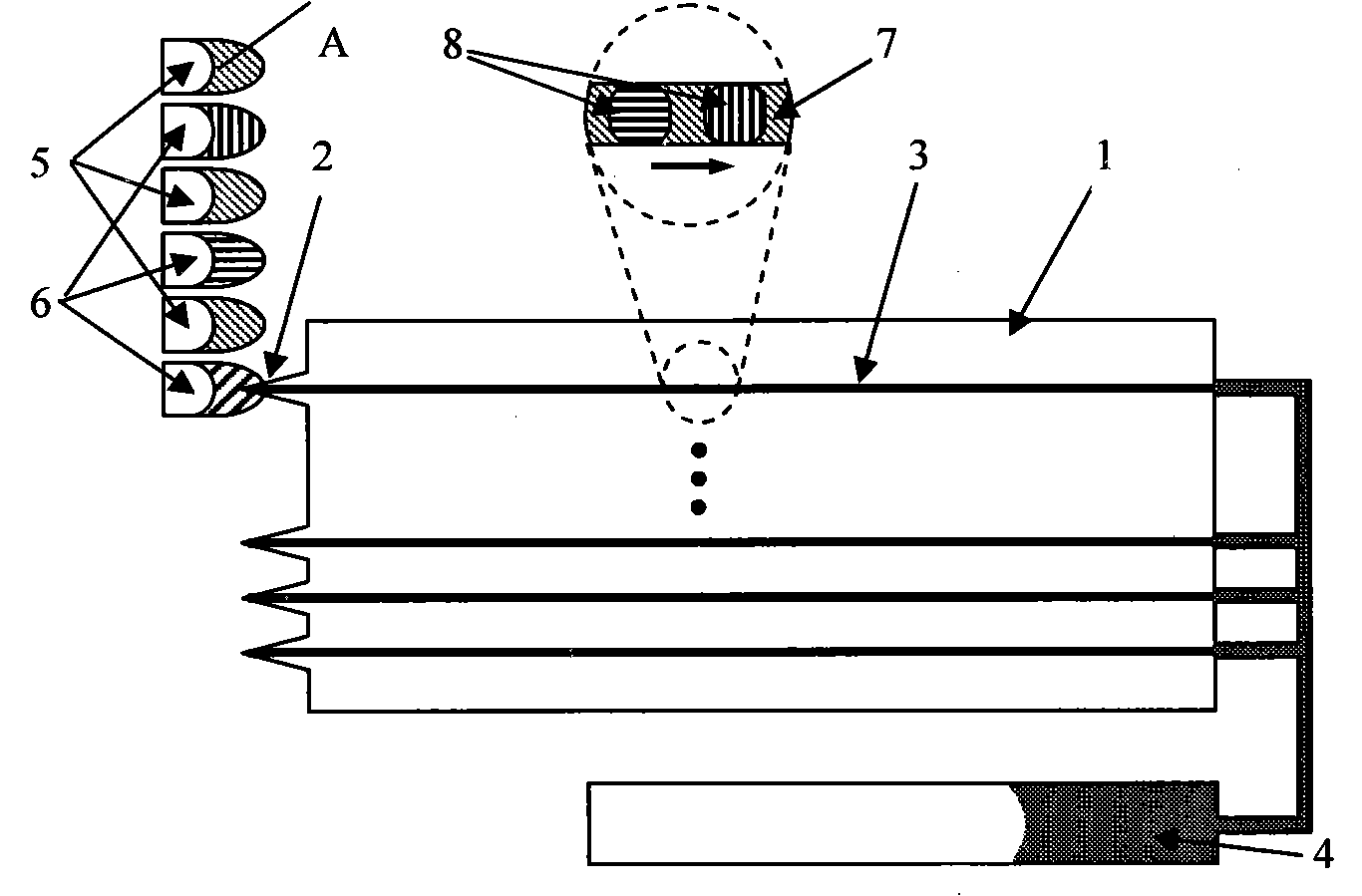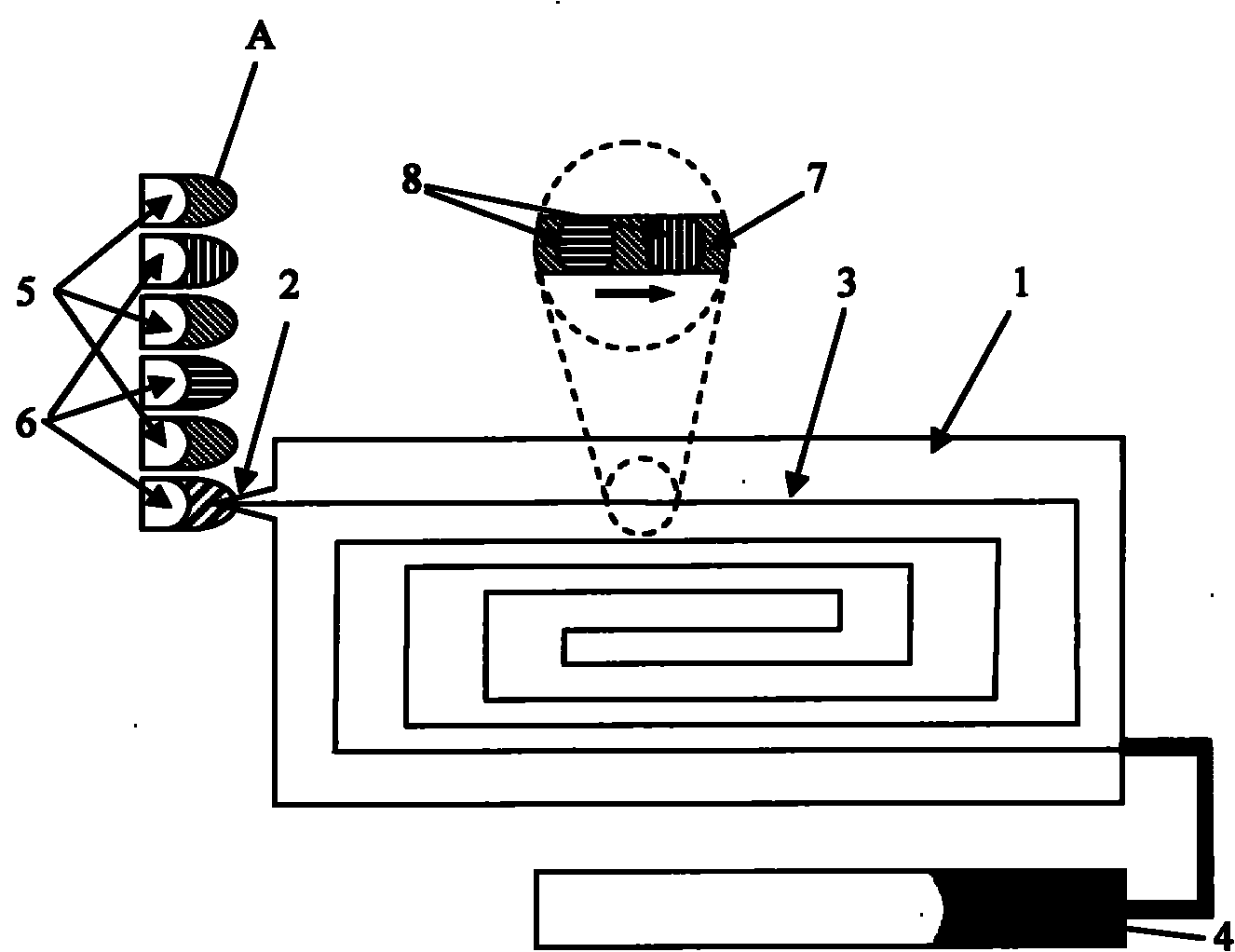Method for preparing microfluidic chip probe array for use in biochip analysis
A technology of microfluidic chips and probe arrays, applied in biochemical equipment and methods, measurement/testing of microorganisms, bioreactors/fermenters for specific purposes, etc., can solve the limitation of probe number and density, probe Problems such as low temperature resistance, experimental operation, system integration, and difficulty in developing new applications can achieve the effects of speeding up production, reducing dependence, and reducing processing costs.
- Summary
- Abstract
- Description
- Claims
- Application Information
AI Technical Summary
Problems solved by technology
Method used
Image
Examples
Embodiment 1
[0023] see figure 1 , the microchannel 3 of the chip 1 is in the shape of a coil, and its inlet 2 is processed into a needle shape, which is inserted into a small test tube A for storing liquid. Small liquid storage test tubes A are arranged at intervals and are respectively equipped with mineral oil 5 and probe solution 6 . The outlet of the microchannel is connected with a horizontal liquid reservoir 4 , and gravity drives the liquid to flow, so that the mineral oil 7 carries the probe droplet 8 to flow in the microchannel 3 . After the flow reaches the predetermined position, the flow is stopped and the immobilization reaction of the probes is carried out to complete the processing of the probe array.
[0024] Figure 6 It is the fluorescent signal intensity obtained by fixing nucleic acid probes of different concentrations for 30 minutes. The probe contains 20 bases, 3' labeled with FITC, 5' labeled with amino groups, through chemical reactions with free aldehyde groups ...
Embodiment 2
[0026] see figure 2 The microchannel 3 of the chip 1 is one or more parallel channels, each channel is processed with an inlet and an outlet, and multiple parallel probe arrays are processed for multiple parallel biochip analysis. exist figure 2 , the other flags are the same as figure 1 same.
Embodiment 3
[0028] see image 3 , the microchannel 3 is in a spiral shape and is used for processing the probe array. exist image 3 , the other flags are the same as figure 1 same.
PUM
| Property | Measurement | Unit |
|---|---|---|
| size | aaaaa | aaaaa |
Abstract
Description
Claims
Application Information
 Login to View More
Login to View More - R&D
- Intellectual Property
- Life Sciences
- Materials
- Tech Scout
- Unparalleled Data Quality
- Higher Quality Content
- 60% Fewer Hallucinations
Browse by: Latest US Patents, China's latest patents, Technical Efficacy Thesaurus, Application Domain, Technology Topic, Popular Technical Reports.
© 2025 PatSnap. All rights reserved.Legal|Privacy policy|Modern Slavery Act Transparency Statement|Sitemap|About US| Contact US: help@patsnap.com



